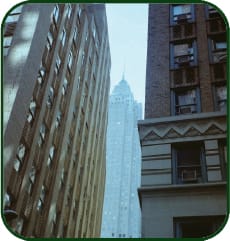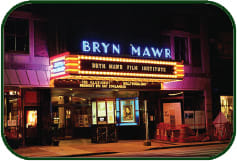Northeast: Rising Tide in the East
The Northeast continues to report a lower jobless rate than any other region. This has helped residents reflect a more positive economic outlook than people in other regions
ECONOMIC OVERVIEW
Dipping to eight percent in April 2011 from 8.9 percent in April 2010, according to the U.S. Department of Labor's Bureau of Labor Statistics, the Northeast's unemployment rate has experienced a much-needed reprieve this year.
JOBLESS RATE
Compared with the national jobless rate of 9.1 percent in May 2011 (which, though up, was nonetheless down from 9.8 percent in April 2010), the Northeast's economy appears to be recovering at a slightly faster clip than the rest of the country.
Within the region, there's a mix of bad news reports, such as Connecticut (9.1 percent) and Rhode Island (10.9 percent), and good—New Hampshire (4.9 percent), Vermont (5.3 percent), and Pennsylvania (7.5 percent).
BUILDING CONFIDENCE
As unemployment woes waned in parts of the Northeast, consumer confidence has been on the rise. In May 2011, a full 31 percent of consumers said they were “confident” or “very confident” about the chances for a strong economy during the next six months, according to the BIGresearch Consumer Intentions & Actions Survey. What a change from May 2008, when a mere 18.4 percent felt “confident/very confident.”
In addition, according to BIGresearch, just 4.2 percent were concerned with being laid off in May 2011, less than half of the 9.67 percent who were worried about losing jobs two years earlier.
SPENDING OUTLOOK
Nearly four out of 10 (38.8 percent) consumers in the Northeast report that they have become more budget conscious in the past six months. And, over 27 percent said they plan to decrease their overall spending in the next three months (up from 26 percent in May 2010).
COST OF GOODS
As consumers became more cost conscious, the Northeast's Consumer Price Index (CPI/the prices paid by urban consumers for a representative basket of goods and services) rose by 2.8 percent for the 12-month period ending in April, according to the BLS. In comparison, the overall U.S. CPI rose only by 0.4 percent.
RETAIL REAL ESTATE
Declining unemployment rates and a more positive outlook for the future of the economy have bolstered the retail real estate market in the Northeast, with lower vacancy rates at a time when commercial real estate rentals are floundering nationwide. Still, asking rents remain on the decline in this region.
VACANCY RATES
The Northeast experienced lower retail vacancy rates for commercial real estate in the first quarter of 2011 than any other area, which is primarily due to the fact that it is a hub for major metros. With a reported vacancy rate of 8.9 percent, the region was a full two percent lower than the overall U.S. vacancy rate of 10.9 percent for the same period, according to Reis, Inc., a New York City-based firm that provides forecasts in the retail real estate market.
“In the Northeast, between the end of last year and the first quarter of this year, vacancy rates did decline slightly, by .2 percent,” says Ryan Severino, a senior economist with Reis, Inc.
And, while average Northeast region rents rang in at $18.75 per square foot (PSF) in 2007, this number dipped down to $17.97 in 2010, according to Reis, Inc.
METRO MARKETS
The Northeast has a few standout metros. According to The CoStar Retail Report from the CoStar Group, the Albany/Schenectady/Troy, New York, retail market boasted a vacancy rate of 4.8 percent and rental rates of $11.25 per square foot (PSF) in the first quarter of 2011. Similarly, the Boston market experienced a five percent vacancy rate (down from 5.9 percent in the first quarter of 2010). This market came in with much higher asking rents of $15.09 PSF.
New York City had a mere 2.2 percent vacancy rate and asking rents of $65.20 PSF, which was actually a decrease from the first quarter of 2010.
In Pennsylvania, the Pittsburgh retail market finished off for the the quarter with a vacancy rate of 5.4 percent, down from the previous quarter. Also indicating a strong market in this metro was a PSF asking rent of $15.78, an increase over the previous quarter. “Pittsburgh is the model city for how to reinvent yourself after your economy declines,” says Severino. “This is one of the markets that didn't really go through a housing boom/bust cycle, so they're not contending with that, either.”
FASHION TRENDS
The hub of all things fashion, the Northeast will see its consumers jump on their own interpretations of the fall season's key style trends, including bright colors, ladylike dressing, fur accessories and accents, and a return to vintage inspiration.
CASUAL/STRUCTURE
“We might see spots of color in weekend clothes for men and women in the Northeast, including colored denim,” says Roseanne Morrison, fashion director at The Doneger Group. She notes that the more conservative Northeast won't embrace the color trend as strongly as the South and West but, “We'll definitely see more structured fabrics in the East.”
| OPTICAL FILE LENS MARKET |
|---|
| Free-form/digitally produced lens sales have dropped in this region from 25 percent in 2010 to 18 percent so far in 2011. The recovery, combined with the Northeast's conservative buying behavior, may account for this. ■ MATERIALS. Survey respondents in the Northeast report using more 1.67 index material than those in any other region (representing 36 percent of premium lens sales in the region compared to 26 percent average nationwide). The Northeast is also seeing a higher rate of photochromic lens sales than other regions. ■ SPECIALTIES. So far this year, the region also ranks the highest nationwide in terms of practice focus on the computer vision specialty category, indicating both high computer usage rates as well as high demand for better on-the-job visual comfort. |
| OPTICAL FRAME FOCUS |
|---|
| In the Northeast, dispensers offered up more plastic eyewear vs. metal than in previous years and also diversified their pricing structures to cast a wide net for potential patients. MATERIALS: The plastic fanatics of the Northeast are moving metals from frame dominance. In EB's first survey in 2009, plastics drew 31 percent of the market. Now it's 42 percent of regional frame sales, while metal is at 47 percent. PURCHASE PATTERNS: While there has been a rebound of refilling old frames with new lenses, from 19 percent in 2010 to 29 percent in 2011, about 71 percent of patients still selected new frames for their new Rx's this year. SECOND PAIRS: Sunglasses were down to 68 percent of second-pair selections for patients of the respondents and clip sales were down to five percent in the region. Casual second pairs stayed flat at 22 percent. PRICING: The Northeast is continuing its hustle to find the just-right pricing mix, and only 40 percent of respondents from the area reported keeping prices the same, a repeat of last years' trend. Below the national averages in expanding to higher pricepoints and expanding to lower pricepoints, 17 and 13 percent, respectively, the Northeast led the nation in expanding to both sides of the price-point spectrum simultaneously, 32 percent. |
| EDGING STATS |
|---|
| This region scores the highest in both in-office lens finishing and surfacing, with about 60 percent of respondents edging and 16 percent surfacing on-site. This represents an increase in in-office edging from last year, despite the plethora of local wholesale labs. 36%… same as last year 18%… more than last year 6%… less than last year |
| SNAPSHOT | |
|---|---|
| Photos featured in this section are: NYC… country's biggest outmigration of educated workers (Pravis Strategy) Concord…. New Hampshire boasts the region's lowest unemployment (Department of Labor) Philly… the nation's most toxic, polluted city (Forbes) Boston… the nation's fourth best city to live in (Kiplinger) Buffalo… second most miserable sports city (Forbes) |
|

Buffalo, N.Y.



New York City


Bryn Mawr, Pa.




